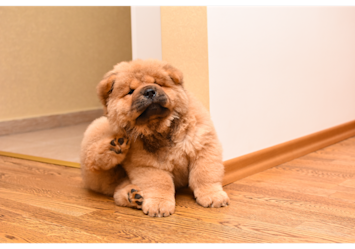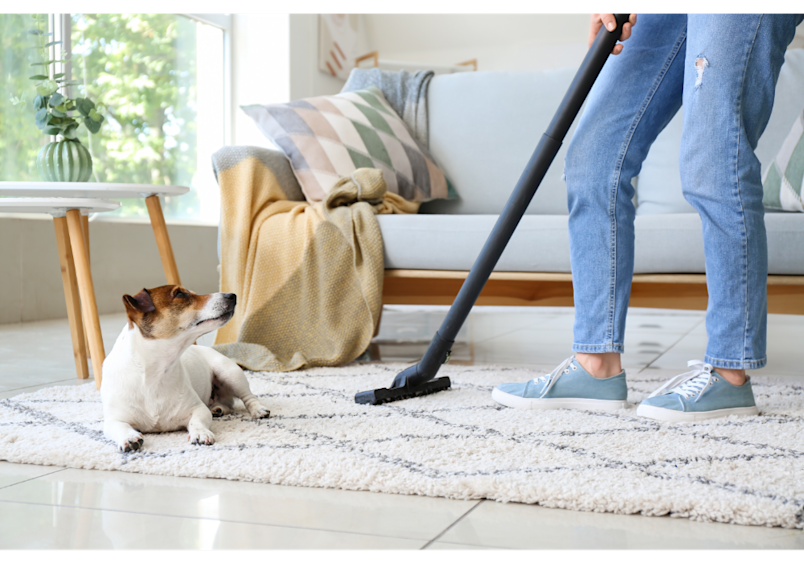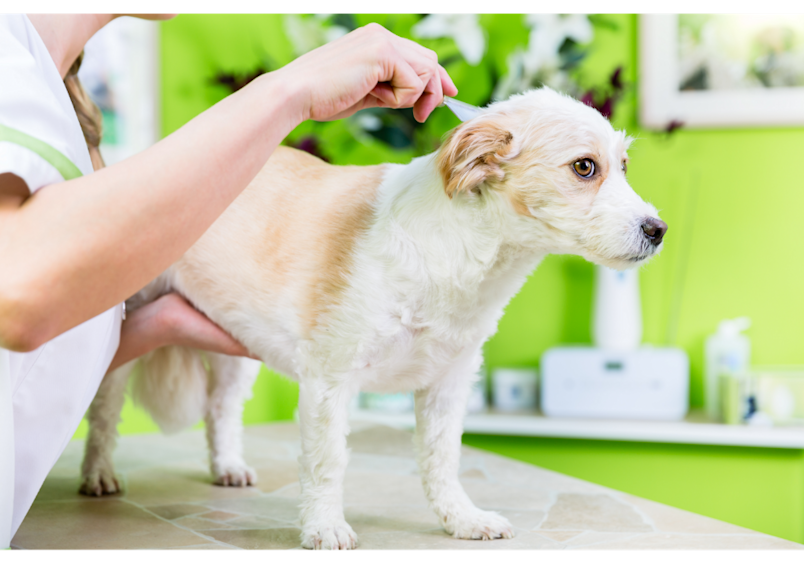
Dogs don’t have many natural enemies, but fleas are definitely near the top of the list. These tiny, blood-sucking pests can make your dog miserable and even lead to health problems if left untreated. The truth is, dogs can pick up fleas almost anywhere—on a walk, at the park, or even in your own backyard. So, if you’ve just discovered a few unwelcome hitchhikers, don’t panic. You’re not alone, and there are plenty of ways to get rid of them for good.
How Do Dogs Get Fleas?
Fleas are everywhere in the environment. They can hitch a ride on wildlife, stray cats, or other dogs and then leap onto your pup with their powerful legs. They thrive in warm, humid conditions, typically between 65 and 85 degrees, which means flea season can last all year in many places. Once a flea finds a host, it doesn’t waste time. Within a day or two, it starts laying eggs that then fall off your dog, hiding in carpets, bedding, and furniture. That’s why a few fleas can quickly turn into a full-blown infestation.
Signs Your Dog Has Fleas
The first clue is usually excessive scratching. If your dog seems unusually itchy, examine the warmest areas where fleas like to hide around the ears, neck, belly, and groin. Look for tiny dark specks moving through the fur or "flea dirt" that resembles black pepper. To confirm fleas are present, place these specks on a damp white paper towel. If they turn reddish-brown, it's digested blood from fleas.
Flea eggs are nearly transparent and smaller than a grain of sand. You'll typically find them in your dog's bedding or favorite resting spots rather than on the dog itself.
Other warning signs include:
Red, irritated skin
Excessive licking or chewing
Small red bumps
Hair loss from scratching
Restless behavior
Pale gums (can indicate anemia and require immediate veterinary care)
Lethargy (can indicate anemia and require immediate veterinary care)
If you notice any of these symptoms, take action quickly to prevent the infestation from spreading throughout your home.
What Do Flea Bites Look Like?
Flea bites appear as small, raised red welts with a central red spot surrounded by a lighter halo, typically arranged in linear patterns or clusters of three to four bites. Unlike randomly distributed mosquito bites, flea bites follow distinctive "breakfast, lunch, and dinner" formations. These bites start as tiny pinprick marks but develop into inflamed, itchy welts within hours. Dogs with flea allergy dermatitis experience an exaggerated immune response to flea saliva, developing widespread inflammation that extends far beyond the actual bite locations and can persist for weeks. Continuous scratching transforms these bites into open sores, crusty scabs, and thickened skin patches. Secondary bacterial infections often develop, presenting as pustules with yellowish discharge or areas with an unpleasant odor. In severe cases, hot spots can develop—rapidly spreading, moist dermatitis that requires immediate veterinary attention to prevent further complications.
Effective Flea Treatment for Dogs
When it comes to flea control, your veterinarian is your best resource. While some over-the-counter products can help, prescription medications are often the most effective. There are several options to choose from:
Oral chewables like NexGard® and Credelio® work quickly and are easy to give.
Bravecto® offers longer protection—up to 12 weeks with a single dose.
Topical treatments such as Frontline® Plus or Advantage® II are applied to the skin and kill fleas and eggs.
Flea collars like Seresto® provide months of continuous protection.
For fast relief, Capstar® starts killing fleas within 30 minutes, though it only works short-term and should be paired with a longer-lasting preventive.
Your vet can help you choose the safest option based on your dog’s age, weight, and health.
Flea Treatment for Dogs and Home Environment
Treating your dog is only half the battle—about 95% of fleas live in your home environment. Adult fleas on your pet represent just a small fraction of the total flea population in your house. The majority consists of eggs, larvae, and pupae hiding in carpets, upholstery, cracks, and crevices throughout your home. These immature stages can continue developing for weeks or even months, leading to new infestations even after treating your dog. Without addressing the environmental component, you'll likely see fleas return within days or weeks. A comprehensive approach targeting both your pet and your living space is essential for complete elimination. To effectively eliminate them:
Vacuum daily during an infestation, focusing on carpets, rugs, furniture, and pet bedding. The vibrations help bring flea eggs and larvae to the surface. Always empty the vacuum outdoors.
Wash all bedding—including your dog’s and yours if shared—in hot, soapy water and dry on high heat. Replace heavily infested bedding if needed.
Steam clean carpets and upholstery, as high temperatures kill fleas at all life stages.
If these methods don’t resolve the issue, consult your vet about insect growth regulators or consider professional extermination for severe infestations.

Are Natural Remedies for Dog Fleas Worth Trying?
Natural remedies can offer gentle relief and work best when paired with vet-approved treatments. A warm bath using dog-safe medicated flea shampoo kills fleas on contact, though it doesn’t provide long-term protection. For dogs with sensitive skin, oatmeal-based shampoos can help soothe irritation.
Some pet parents also use natural repellents:
Apple Cider Vinegar: Mix 3 parts ACV with 2 parts water and spritz onto your dog’s coat.
Essential Oil Sprays: Citronella, eucalyptus, peppermint, and rosemary (always diluted and vet-approved).
Coconut Oil: Applied topically to help repel fleas.
Why Year-Round Flea Treatment for Dogs Matters
Fleas aren’t just a seasonal problem. Even when temperatures drop, dog fleas can survive and thrive indoors, hiding in carpets, bedding, and upholstery. That’s why veterinarians strongly recommend year-round flea prevention for every pet in the household.
Using monthly preventives or long-acting flea treatments helps break the flea life cycle and prevents reinfestation. These options are easy to administer and provide consistent protection, making it much harder for fleas to return—even during colder months.
Smart Financial Approach to Flea Treatment for Dogs
Flea problems can escalate quickly, and the costs of treatment often go beyond a simple pill. Severe infestations can lead to skin infections, allergic reactions, or even anemia. These conditions may require lab work, medications, and multiple follow-up visits.
This is where pet insurance can make a big difference. Pet insurance helps cover the cost of unexpected illnesses related to flea infestations, such as secondary skin infections or anemia. The cost to treat anemia in dogs can be significant, often ranging from $500 to $3,500 or more, especially if blood transfusions or other intensive care are required. Having insurance can help you focus on your dog's recovery, not the financial stress, and allow you to choose the best treatment without hesitation. Visit the official Embrace site to get a quote.
Consider adding an optional wellness plan to help with routine flea prevention. Staying consistent with flea prevention is far more affordable than treating a full-blown infestation. A wellness plan can help you budget for the cost of preventives, annual exams, and other proactive care that keeps your dog healthy year-round.

Flea Treatment for Dogs
Start with a veterinary consultation to discuss the best dog flea medicine for your situation, then combine this with thorough home cleaning, and add in preventatives. Successfully eliminating fleas requires patience, persistence, and the right combination of treatments. Effective flea treatment for dogs includes killing the fleas you can see AND breaking the entire lifecycle, as well as preventing future infestations.
A flea infestation can feel insurmountable. They're everywhere, and it takes a lot of hard work and time to get rid of them. But every load of laundry, every floor you vacuum, and every flea bath you give makes you a better pet owner. You're learning to see things you didn't even know to look for before, and how to deal with some sticky situations your pup gets into. You've gained experience and confidence, so now you can be a better pet parent than ever!